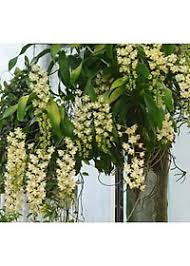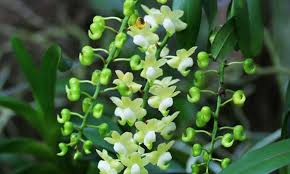
Quế Lan Hương, or the fragrant orchid, is a beloved flower in Vietnam, especially during the Tet holiday, which celebrates the Lunar New Year. This beautiful orchid is admired for its stunning blooms and delightful aroma, making it a popular choice for festive decorations and gifts. Achieving a spectacular bloom of Quế Lan Hương for Tet requires careful planning, proper care, and an understanding of the orchid’s specific needs. In this comprehensive guide, we will explore the secrets to ensuring your Quế Lan Hương blooms beautifully just in time for Tet.
## 1. Understanding Quế Lan Hương and Its Blooming Cycle
### A. Characteristics of Quế Lan Hương
Quế Lan Hương, scientifically known as *Dendrobium anosmum*, is a species of orchid native to Southeast Asia. It is known for its:
– **Distinctive Fragrance**: The flowers emit a sweet and pleasant aroma, especially in the early morning.
– **Variety of Colors**: While the most common color is purple, Quế Lan Hương can also produce blooms in white, pink, and yellow.
– **Growth Habit**: This orchid typically grows as an epiphyte, attaching itself to trees in its natural habitat.
### B. Blooming Cycle
The blooming cycle of Quế Lan Hương is influenced by several factors, including environmental conditions and care practices. Understanding its cycle is essential for encouraging timely blooms for Tet:
– **Dormancy Phase**: Quế Lan Hương experiences a dormant phase during the dry season, usually in late fall and winter. During this period, the plant conserves energy and prepares for blooming.
– **Blooming Phase**: The flowering period typically occurs in late winter to early spring, coinciding with the Tet holiday. With proper care, it can bloom at the desired time.
## 2. Preparing Quế Lan Hương for Blooming
### A. Timing Is Key
To ensure that Quế Lan Hương blooms for Tet, timing is crucial. Here’s how to prepare your orchid for blooming:
1. **Start Early**: Begin preparations at least three to four months before Tet. This allows adequate time for the plant to transition from dormancy to active growth and blooming.
2. **Assess Health**: Before the blooming period, check the overall health of your orchid. Healthy plants are more likely to produce vibrant blooms.
### B. Repotting Before Blooming
If your Quế Lan Hương is overdue for repotting, consider doing so before the blooming phase:
– **Choosing the Right Medium**: Use a well-draining orchid potting mix that provides good aeration. Common ingredients include bark, sphagnum moss, and perlite.
– **Timing of Repotting**: Repotting should be done a few months before the expected bloom period. This gives the plant time to recover from any stress associated with repotting.
## 3. Optimal Growing Conditions
### A. Temperature
Maintaining the right temperature is essential for promoting blooms:
– **Daytime Temperature**: Quế Lan Hương thrives in temperatures between 20°C to 30°C (68°F to 86°F) during the day.
– **Nighttime Temperature**: Nights should be cooler, around 15°C to 20°C (59°F to 68°F). This temperature drop can encourage blooming.
### B. Light Requirements
Light is one of the most critical factors for blooming:
– **Bright, Indirect Light**: Quế Lan Hương requires bright but indirect sunlight. Too much direct sun can scorch the leaves, while too little light can prevent flowering.
– **Location**: Place your orchid near a window where it can receive ample light throughout the day, preferably with filtered sunlight.
### C. Humidity Levels
High humidity is essential for Quế Lan Hương’s health and blooming potential:
– **Humidity Range**: Maintain humidity levels between 60% and 80%. This can be achieved by using a humidifier or placing a humidity tray filled with water and pebbles under the orchid.
– **Regular Misting**: Light misting can help maintain humidity levels, especially during dry seasons.
## 4. Watering Practices
### A. Watering Schedule
Watering is crucial for the health of Quế Lan Hương and its ability to bloom:
– **Soil Moisture**: Allow the potting medium to dry slightly between waterings. Overwatering can lead to root rot, while underwatering can stress the plant.
– **Water Quality**: Use distilled or rainwater when possible, as tap water may contain chemicals that could harm the orchid.
### B. Adjusting Watering Before Blooming
As the blooming period approaches, make adjustments to your watering routine:
– **Decrease Watering Frequency**: In the weeks leading up to Tet, reduce watering to encourage the plant to enter its blooming phase. This stress can prompt flower development.
– **Signs of Drought Stress**: Monitor the orchid closely for signs of drought stress, such as wrinkled or shriveled leaves, and adjust your watering schedule accordingly.
## 5. Fertilization Techniques
### A. Fertilizing During Growth Phase
Proper fertilization is vital for promoting healthy growth and blooms:
– **Balanced Fertilizer**: Use a balanced fertilizer with an equal ratio of nitrogen, phosphorus, and potassium (e.g., 20-20-20) during the growing season.
– **Frequency**: Fertilize every two to four weeks, diluting the fertilizer to half the recommended strength to avoid burning the roots.
### B. Transitioning to Blooming Fertilizer
As Tet approaches, switch to a fertilizer designed to promote blooming:
– **High-Phosphorus Fertilizer**: Use a fertilizer high in phosphorus (e.g., 10-30-20) to encourage flower formation. This transition should happen about six weeks before Tet.
– **Dilution**: Continue to dilute the fertilizer to prevent root damage and promote healthier growth.
## 6. Pruning and Grooming
### A. Regular Maintenance
Regular maintenance is crucial for the overall health of Quế Lan Hương and its ability to bloom:
– **Removing Dead Material**: Regularly prune away any dead or yellowing leaves and spent flower spikes. This encourages new growth and improves airflow around the plant.
– **Grooming**: Clean the leaves gently to remove dust and debris, which can hinder photosynthesis.
### B. Preparing for Bloom
As the blooming period approaches, consider light grooming techniques:
– **Pruning Flower Spikes**: Once flowers have faded, prune the flower spikes to encourage new blooms in the next cycle.
– **Inspecting for Pests**: Regularly check for pests and treat any infestations promptly to prevent damage to the plant.
## 7. Managing Environmental Stressors
### A. Minimizing Stress
Environmental stress can hinder blooming, so it’s essential to create a stable environment:
– **Avoid Temperature Fluctuations**: Keep the orchid away from drafts, heating vents, and air conditioning units to maintain a stable temperature.
– **Consistent Light Exposure**: Ensure the orchid receives consistent light without sudden changes in exposure.
### B. Protecting Against Pests and Diseases
Preventing pests and diseases is crucial for healthy blooms:
– **Regular Inspections**: Frequently inspect your orchid for pests such as aphids, mealybugs, or spider mites. Early detection is key to effective management.
– **Natural Remedies**: Use neem oil or insecticidal soap as a natural pest control option to protect your orchid without harsh chemicals.
## 8. Ensuring the Right Conditions During Tet
### A. Temporary Relocation for Display
If you plan to display your Quế Lan Hương during Tet, consider temporarily relocating it:
– **Stable Environment**: Move the orchid to a location with stable temperature and humidity levels, avoiding places with excessive heat or cold.
– **Light Conditions**: Ensure it still receives adequate light during the festive period, even if moved to a new location.
### B. Post-Tet Care
After Tet, it’s important to provide continued care:
– **Resume Normal Watering**: Adjust your watering schedule back to normal after the blooming period. The orchid will require more water as it enters its growth phase.
– **Fertilization Adjustments**: Return to a balanced fertilizer routine to support ongoing growth and health.
## 9. Common Challenges and Solutions
### A. Troubleshooting Bloom Issues
If your Quế Lan Hương does not bloom as expected, consider the following common challenges:
– **Insufficient Light**: If the orchid is not receiving enough light, adjust its position to ensure it receives brighter indirect light.
– **Temperature Issues**: Fluctuating temperatures can hinder blooming. Maintain a stable environment, especially during the critical blooming phase.
### B. Addressing Pests and Diseases
If pest problems arise:
– **Immediate Action**: Treat any infestations promptly with appropriate pest control methods to prevent further damage.
– **Isolate Infected Plants**: If other plants are present, isolate any affected orchids to prevent the spread of pests or diseases.
## 10. Conclusion
Ensuring that Quế Lan Hương blooms beautifully for Tet requires careful planning, proper care, and an understanding of its specific needs. By following the strategies outlined in this guide, you can create the ideal conditions for your orchid to flourish and produce stunning blooms just in time for the Lunar New Year.
From managing light, temperature, and humidity to optimizing watering and fertilization practices, each step plays a critical role in fostering healthy growth and vibrant blooms. With dedication and attention to detail, your Quế Lan Hương will not only enhance your home during Tet but also bring joy and beauty throughout the year.
Embrace the journey of nurturing this exquisite orchid, and let its captivating
beauty grace your celebrations. Happy gardening and a prosperous Tet!


